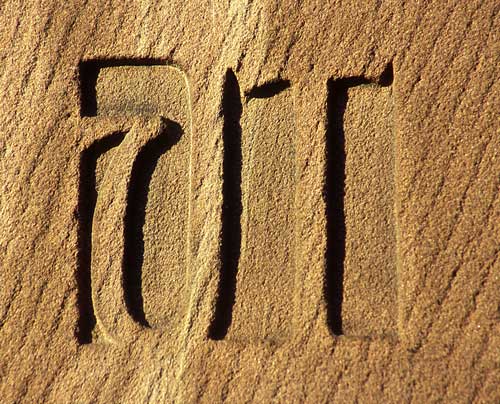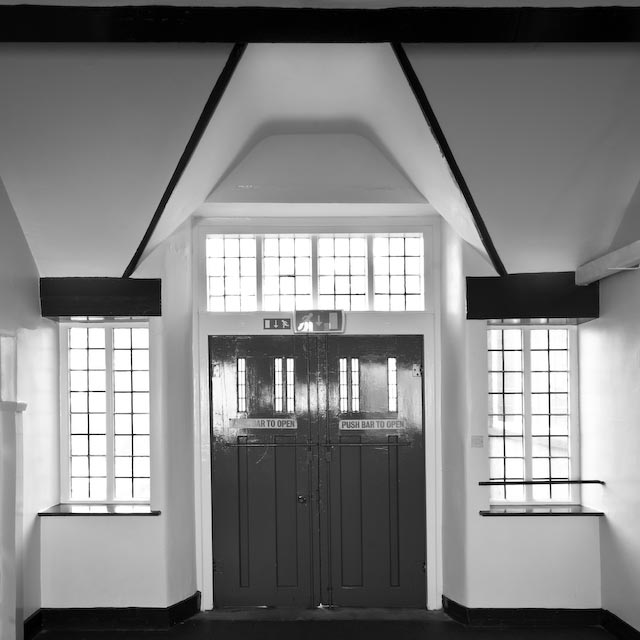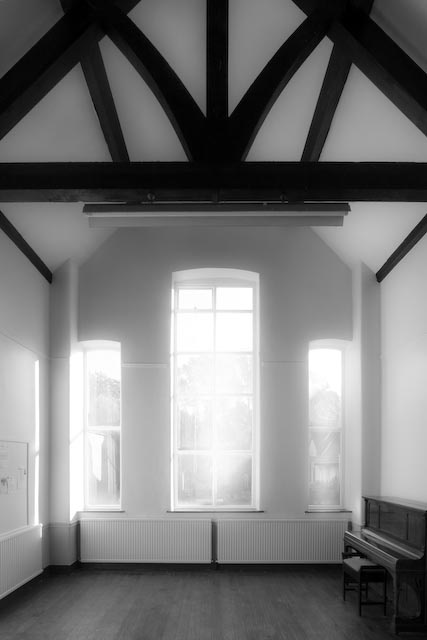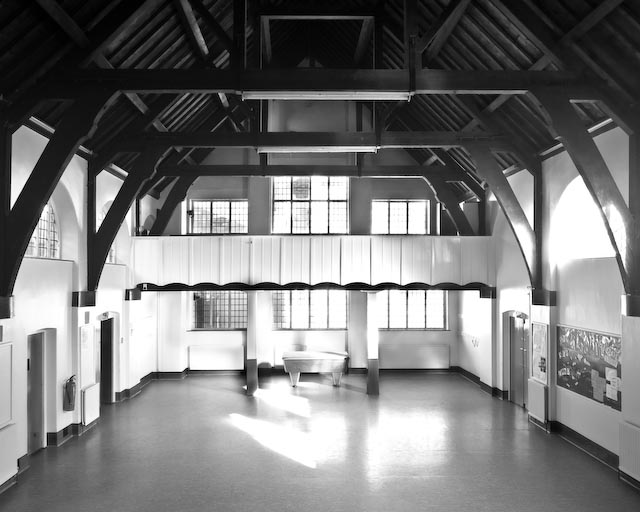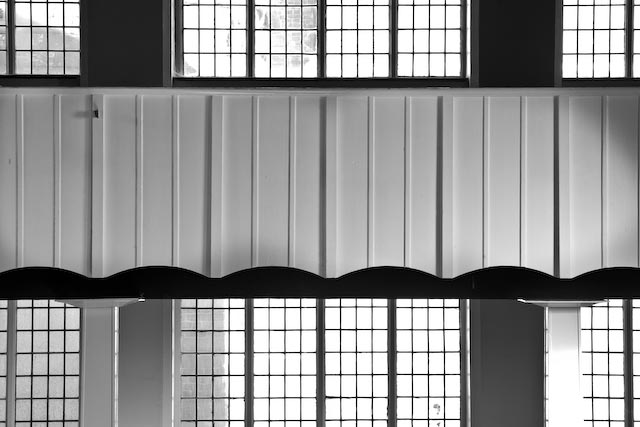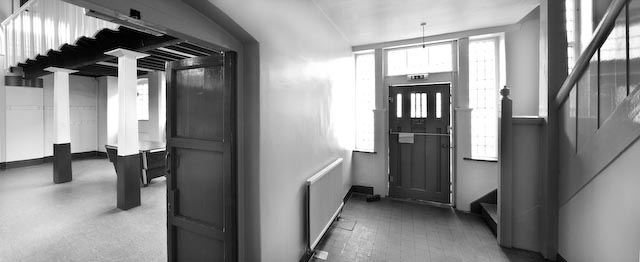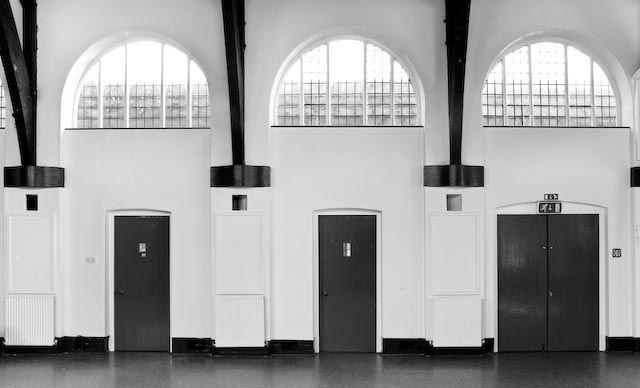
Long Street Methodist Church, Middleton by 1899-1901 by Edgar Wood
I love architecture for more than just the visual delights it entails. I also love it for the journey that it takes me upon. One such journey is with the architecture of Edgar Wood (1860-1935). I have a strong relationship with his Long Street Methodist Church of 1899-1901. I am a 'Friend' and recently had an exhibition put on permenant display within the school rooms which form the southern wing of a courtyard linking the spiritual with the secular.
Redcroft and Fencegate, Middleton 1895 by Edgar Wood
The journey I have had with this particular architect has been enlightening to say the least. Wood was born in Middleton where I was brought up from the age of 3. As a child I was aware of his buildings and went to the infant school at Durnford Street which he built in association with James Henry Sellers. Our local news agents was also built by Wood and stands opposite a house he built for himself at Redcroft. I sort of knew, but didn't know (if you know what I mean) that these buildings looked different than the others around the town.
Walking into Middleton as a teenager I would peer through the gates of the Methodist Church at the Nirvana within. The gates reveal a courtyard which has a real magical sense of enclosure; a haven and oasis in the middle of urbanity.
Detail from gates to the courtyard at Long Street Methodist Church
Later, as an adult I became involved with Long Street Methodist church as a 'Friend' and as a part of the group helped develop strategies to try and raise the profile of a building which is under threat because of a dwindling congregation and increasing costs.
Cornerstone Magazine for the Friends of Long Street Methodist Church
I have to admit that it was always the exterior which fascinated me. It was some way expressive of an individual spirit - real cutting edge architecture.
Long Street Methodist Church exterior detail
During September I had my passions re-ignited for all things Wood related and met some wonderful people during the Heritage Open Day who fuelled my interest in expanding my knowledge about the wider context of Wood's work.
I am always fascinated by associations and sources of inspiration and in researching these for Wood I came across a list as long as my arm:
People
Mackmurdo, Mackintosh, Voysey, Olbrich, Wagner, Lutyens, Sellers, Parker and Unwin, Wilson, Whall, Townsend, Crane, Wallis, Gilbert, FW Jackson, Madox Brown, Loos, Klimt, Muthesius, Roller, Bohm, Hoffman......
Detail from Saint Martin's Marple design by Henry Wilson (1895)
Buildings
Palais Stoclet, Rochdale Town Hall, Saint Leonard's Middleton, Kartner Bar Vienna, Saint Martin's Marple, Sanatorium Perkersdorf......
Rochdale Town Hall
Literature
Ver Sacrum, Das Englische Haus, Academy Architecture, Moderne Bauformen, The Builders Journal, The Studio, The Hobby Horse .......
Detail from 'The Studio' 1898 showing some of Wood's furniture design
Movements and Organisations
The Secessionists, The Century Guild, Northern Art Workers Guild, Manchester Society of Architects, Birmingham Architectural Association......
Pattern detail by Kolo Moser co-founder of the Secessionists
Events
Century Guild Liverpool 1887, Manchester Royal Jubilee Exhibition 1887, Northern Art Workers Guild Exhibitions, Arts and Crafts Exhibition
Poster for the Northern Artworkers Guild Exhibition
There are so many and the relationships are so complex I have started a mindmap combined with a timeline
Edgar Wood Mindmap - showing relationships and influences
A small part of my Edgar Wood Timeline
With my brain buzzing with movements, people, ideologies and events I felt the urge to go back and photograph the interior of the school buildings attached to the Church. I felt that these buildings (more than the church itself) were in some way more expressive of Wood's development towards his exemplary contribution towards the modern movement.
I am sure that this is well known amongst the archi academics - but I had to somehow learn this for myself.
What has resulted is a series of images which have in turn taught me something about the architecture of Edgar Wood. I chose to display the images in black and white (not my usual choice) because of the advantage of black and white imagery to enhance form and line and reduce the visual impact of contemporary clutter. I wanted to connect with the freshness of the form and space as it would have been seen in 1901.
What I now see in the school buildings at Long Street is the transition between the "decorative sweetness of the C19th and the dry objectivity of the C20th". Here we have a strong influence of Mackintosh (via the European filter of the secessionists?) pared down into an English sensibility.
Wood is almost unhampered in allowing the plan to dictate the form. It is the roof structure which is holding back the complete transition into unrestrained modernism.
It is wonderful when you witness the moment of an individual's discovery; and I suppose that it is appropriate that within the walls of Wood's unique contribution to architecture that I have had the same revelation.



